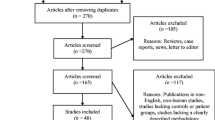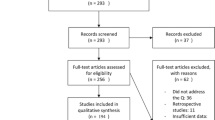Abstract
Whole saliva is mainly composed of fluid produced by major and minor salivary glands. Major salivary glands including parotid, submandibular, and sublingual glands, are known to secrete fluid transported from serum as well as surrounding glandular tissues [1]. Beside the secretions from salivary glands, oral mucosa, periodontium, as well as oral microflora also contribute to the final content of whole saliva [1]. Whole saliva therefore represents a complex balance among local and systemic sources [2]. This allows for the application of saliva in the diagnosis not only for salivary gland disorders but also for oral diseases and systemic conditions [2]. The role of saliva as a diagnostic tool in detecting Oral Squamous Cell Carcinoma. Articles published in PUBMED, EMBASE, COCHRANE, GOOGLE, manual search and back references of the articles for last 5 years extracted 77 articles. Studies which considered saliva as a diagnostic tool were included. Statistical analysis with Receivers Operating Curve to establish sensitivity and specificity of the salivary biomarkers as a diagnostic tool to detect Oral Squamous Cell Carcinoma were included for meta analysis. The measure of effect with 95% confidence interval were meta analysed for 9 articles in which 308 healthy individuals compared with 340 patients with Oral Squamous Cell Carcinoma. Highly sensitive salivary biomarkers for detecting Oral Squamous Cell Carcinoma were MMP-9, Chemerin, Choline + Betaine + Pipecolinic Acid + I – Carnitine(confidence interval ranges from 0.83–1.0). The narrow confidence interval of 0.95 + (0.88–1.00) was seen for MMP-9 followed by 1.00 + (0.78–1.00) for chemerin. Highly specific biomarkers for Oral Squamous Cell Carcinoma were MMP-9 (specificity −100%,), Chemerin(specificity-100%), over expressed mi RNA 136 with specificity of 0.88(0.69–0.97), under expressed mi RNA 27B with specificity of 1.0(0.66–1.00). Saliva can be used as a diagnostic tool with highly sensitive and specific markers namely MMP-9, Chemerin for early detection of Oral Squamous Cell Carcinoma.

Similar content being viewed by others
References
Caporossi L, Santoro A, Papaleo B (2010 Sep) Saliva as an analytical matrix: state of the art and application for biomonitoring. Biomark Biochem Indic Expo Response Susceptibility Chem 15(6):475–487
Good DM, Thongboonkerd V, Novak J, Bascands J-L, Schanstra JP, Coon JJ, Dominiczak A, Mischak H (2007 Dec) Body fluid proteomics for biomarker discovery: lessons from the past hold the key to success in the future. J Proteome Res 6(12):4549–4555
jpsr05101306.pdf [Internet]. [cited 2017 Dec 30]. Available from: http://www.jpsr.pharmainfo.in/Documents/Volumes/vol5issue10/jpsr05101306.pdf
Malamud D, Rodriguez-Chavez IR (2011 Jan) Saliva as a Diagnostic Fluid. Dent Clin N Am 55(1):159–178
Radhika T, Jeddy N, Nithya S, Muthumeenakshi RM (2016 Nov) Salivary biomarkers in oral squamous cell carcinoma – an insight. J Oral Biol Craniofacial Res 6(Suppl 1):S51–S54
Gualtero DF, Castillo AS (2016 Apr 2) Biomarkers in saliva for the detection of oral squamous cell carcinoma and their potential use for early diagnosis: a systematic review. Acta Odontol Scand 74(3):170–177
Lee LT, Wong YK, Hsiao HY, Wang YW, Chan MY, Chang KW (2017 Nov 27) Evaluation of saliva and plasma cytokine biomarkers in patients with oral squamous cell carcinoma. Int J Oral Maxillofac Surg
Ghallab NA, Shaker OG (2017 Apr) Serum and salivary levels of chemerin and MMP-9 in oral squamous cell carcinoma and oral premalignant lesions. Clin Oral Investig 21(3):937–947
Malhotra R, Urs AB, Chakravarti A, Kumar S, Gupta VK, Mahajan B (2016 Jul) Correlation of Cyfra 21-1 levels in saliva and serum with CK19 mRNA expression in oral squamous cell carcinoma. Tumour Biol J Int Soc Oncodevelopmental Biol Med 37(7):9263–9271
Zahran F, Ghalwash D, Shaker O, Al-Johani K, Scully C (2015 Sep) Salivary microRNAs in oral cancer. Oral Dis 21(6):739–747
Rajkumar K, Nandhini G, Ramya R, Rajashree P, Kumar AR, Anandan SN (2014 Sep) Validation of the diagnostic utility of salivary interleukin 8 in the differentiation of potentially malignant oral lesions and oral squamous cell carcinoma in a region with high endemicity. Oral Surg Oral Med Oral Pathol Oral Radiol 118(3):309–319
Wang Q, Gao P, Cheng F, Wang X, Duan Y (2014 Feb) Measurement of salivary metabolite biomarkers for early monitoring of oral cancer with ultra performance liquid chromatography-mass spectrometry. Talanta 119:299–305
Momen-Heravi F, Trachtenberg AJ, Kuo WP, Cheng YS (2014 Jul) Genomewide study of salivary MicroRNAs for detection of Oral Cancer. J Dent Res 93(7 Suppl):86S–93S
Rajkumar K, Ramya R, Nandhini G, Rajashree P, Ramesh Kumar A, Nirmala Anandan S (2015 Jan) Salivary and serum level of CYFRA 21-1 in oral precancer and oral squamous cell carcinoma. Oral Dis 21(1):90–96
Wang Q, Gao P, Wang X, Duan Y (2014 Jan 1) Investigation and identification of potential biomarkers in human saliva for the early diagnosis of oral squamous cell carcinoma. Clin Chim Acta Int J Clin Chem 427:79–85
Castagnola M, Scarano E, Passali GC, Messana I, Cabras T, Iavarone F, di Cintio G, Fiorita A, de Corso E, Paludetti G (2017 Apr) Salivary biomarkers and proteomics: future diagnostic and clinical utilities. Acta Otorhinolaryngol Ital 37(2):94–101
Al-Tarawneh SK, Border MB, Dibble CF, Bencharit S (2011 Jun) Defining salivary biomarkers using mass spectrometry-based proteomics: a systematic review. OMICS J Integr Biol 15(6):353–361
Wang N, Wang Q-J, Feng Y, Shang W, Cai M (2013 Jul 19) Overexpression of chemerin was associated with tumor angiogenesis and poor clinical outcome in squamous cell carcinoma of the oral tongue. Clin Oral Investig 18
Vilen S-T, Salo T, Sorsa T, Nyberg P. Fluctuating Roles of Matrix Metalloproteinase-9 in Oral Squamous Cell Carcinoma. Sci World J [Internet]. 2013 Jan 8 [cited 2018 Jan 5];2013. Available from: https://www.ncbi.nlm.nih.gov/pmc/articles/PMC3556887/
Jemal A, Bray F, Center MM, Ferlay J, Ward E, Forman D (2011 Apr) Global cancer statistics. CA Cancer J Clin 61(2):69–90
Manikandan M, Deva Magendhra Rao AK, Arunkumar G, Manickavasagam M, Rajkumar KS, Rajaraman R, et al. Oral squamous cell carcinoma: microRNA expression profiling and integrative analyses for elucidation of tumourigenesis mechanism. Mol Cancer [Internet]. 2016 Apr 7 [cited 2018 Jan 5];15. Available from: https://www.ncbi.nlm.nih.gov/pmc/articles/PMC4823852/
Londin E, Loher P, Telonis AG, Quann K, Clark P, Jing Y et al (2015 Mar 10) Analysis of 13 cell types reveals evidence for the expression of numerous novel primate- and tissue-specific microRNAs. Proc Natl Acad Sci U S A 112(10):E1106–E1115
Calin GA, Sevignani C, Dumitru CD, Hyslop T, Noch E, Yendamuri S, Shimizu M, Rattan S, Bullrich F, Negrini M, Croce CM (2004 Mar 2) Human microRNA genes are frequently located at fragile sites and genomic regions involved in cancers. Proc Natl Acad Sci U S A 101(9):2999–3004
Wei J, Xie G, Zhou Z, Shi P, Qiu Y, Zheng X, Chen T, Su M, Zhao A, Jia W (2011 Nov 1) Salivary metabolite signatures of oral cancer and leukoplakia. Int J Cancer 129(9):2207–2217
Tanaka T, Narazaki M, Kishimoto T. IL-6 in Inflammation, Immunity, and Disease. Cold Spring Harb Perspect Biol [Internet]. 2014 Oct [cited 2018 Jan 4];6(10). Available from: https://www.ncbi.nlm.nih.gov/pmc/articles/PMC4176007/
Baracos VE, Mackenzie ML (2006 Jan) Investigations of branched-chain amino acids and their metabolites in animal models of cancer. J Nutr 136(1 Suppl):237S–242S
Jinno T, Kawano S, Maruse Y, Matsubara R, Goto Y, Sakamoto T, Hashiguchi Y, Kaneko N, Tanaka H, Kitamura R, Toyoshima T, Jinno A, Moriyama M, Oobu K, Kiyoshima T, Nakamura S (2015 May) Increased expression of interleukin-6 predicts poor response to chemoradiotherapy and unfavorable prognosis in oral squamous cell carcinoma. Oncol Rep 33(5):2161–2168
Bickel M (1993 May) The role of interleukin-8 in inflammation and mechanisms of regulation. J Periodontol 64(5 Suppl):456–460
Interleukin 8 - an overview | ScienceDirect Topics [Internet]. [cited 2018 Jan 4]. Available from: https://www.sciencedirect.com/topics/neuroscience/interleukin-8
Lopez-Castejon G, Brough D (2011 Aug) Understanding the mechanism of IL-1β secretion. Cytokine Growth Factor Rev 22(4):189–195
IL1B - Interleukin-1 beta precursor - Homo sapiens (Human) - IL1B gene & protein [Internet]. [cited 2018 Jan 4]. Available from: http://www.uniprot.org/uniprot/P01584
Nakano Y, Kobayashi W, Sugai S, Kimura H, Yagihashil S (1999 Aug 1) Expression of tumor necrosis factor-α and Interleukin-6 in Oral squamous cell carcinoma. Jpn J Cancer Res 90(8):858–866
Niemann AM, Goeroegh T, Gottschlich S, Lippert BM, Werner JA (1997 Aug) Cut-off value determination of CYFRA 21-1 for squamous cell carcinomas of the head and neck (SCCHN). Anticancer Res 17(4B):2859–2860
Hsu Y-P, Hsieh C-H, Chien H-T, Lai C-H, Tsao C-K, Liao C-T, et al. Serum markers of CYFRA 21-1 and C-reactive proteins in oral squamous cell carcinoma. World J Surg Oncol [Internet]. 2015 Aug 21 [cited 2018 Jan 5];13. Available from: https://www.ncbi.nlm.nih.gov/pmc/articles/PMC4546149/
Author information
Authors and Affiliations
Corresponding author
Additional information
Publisher’s Note
Springer Nature remains neutral with regard to jurisdictional claims in published maps and institutional affiliations.
Rights and permissions
About this article
Cite this article
Hema Shree, K., Ramani, P., Sherlin, H. et al. Saliva as a Diagnostic Tool in Oral Squamous Cell Carcinoma – a Systematic Review with Meta Analysis. Pathol. Oncol. Res. 25, 447–453 (2019). https://doi.org/10.1007/s12253-019-00588-2
Received:
Accepted:
Published:
Issue Date:
DOI: https://doi.org/10.1007/s12253-019-00588-2




